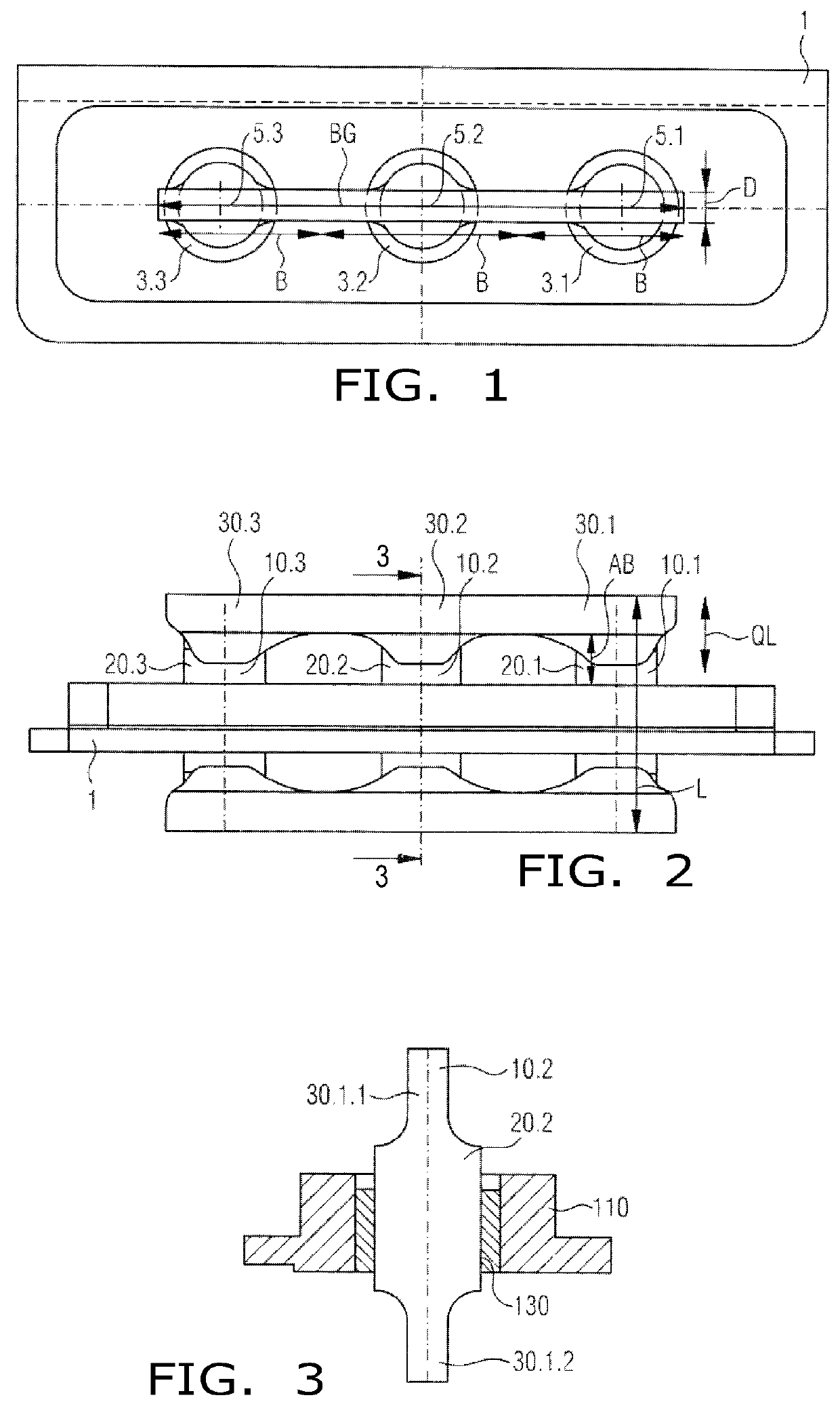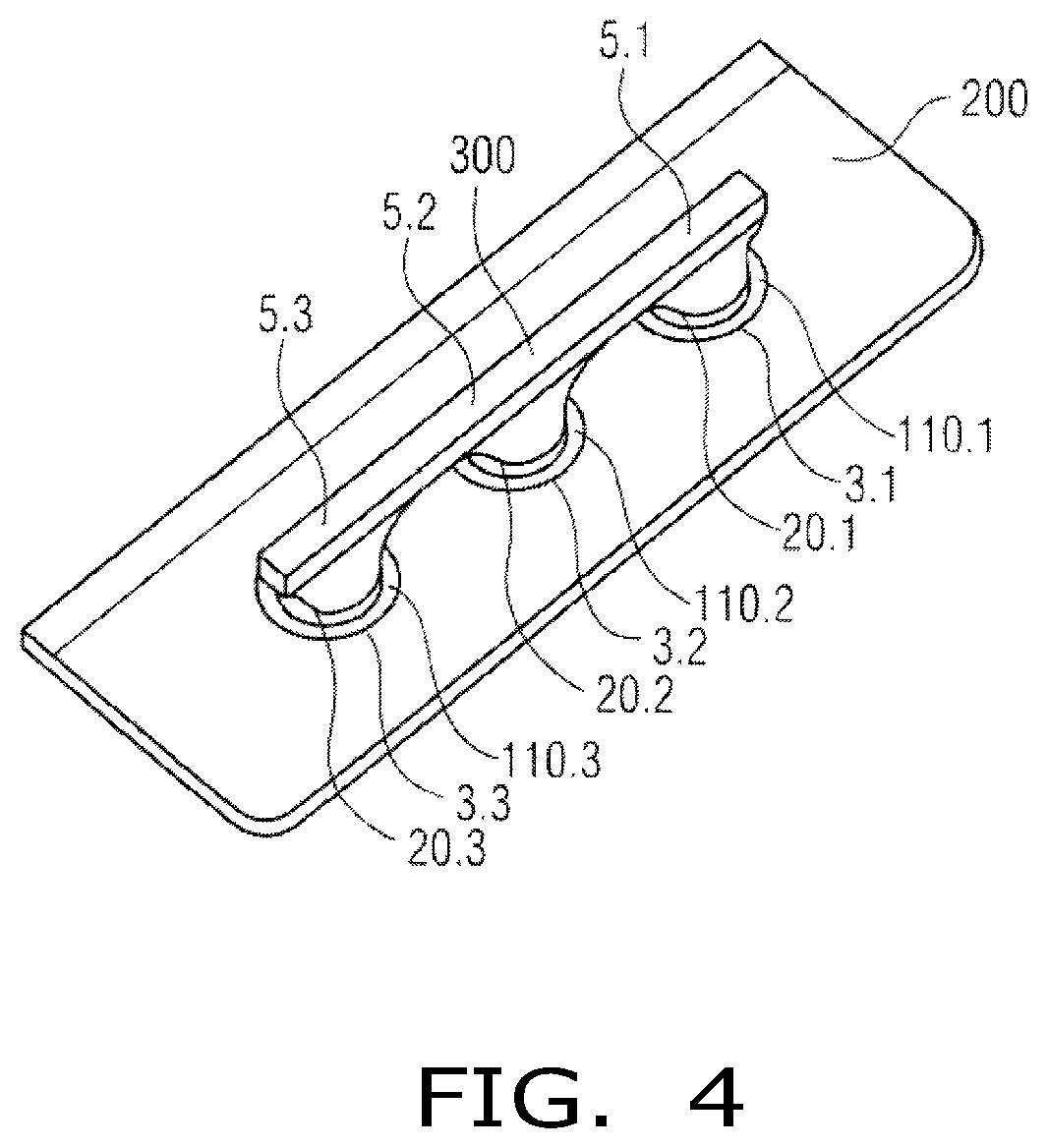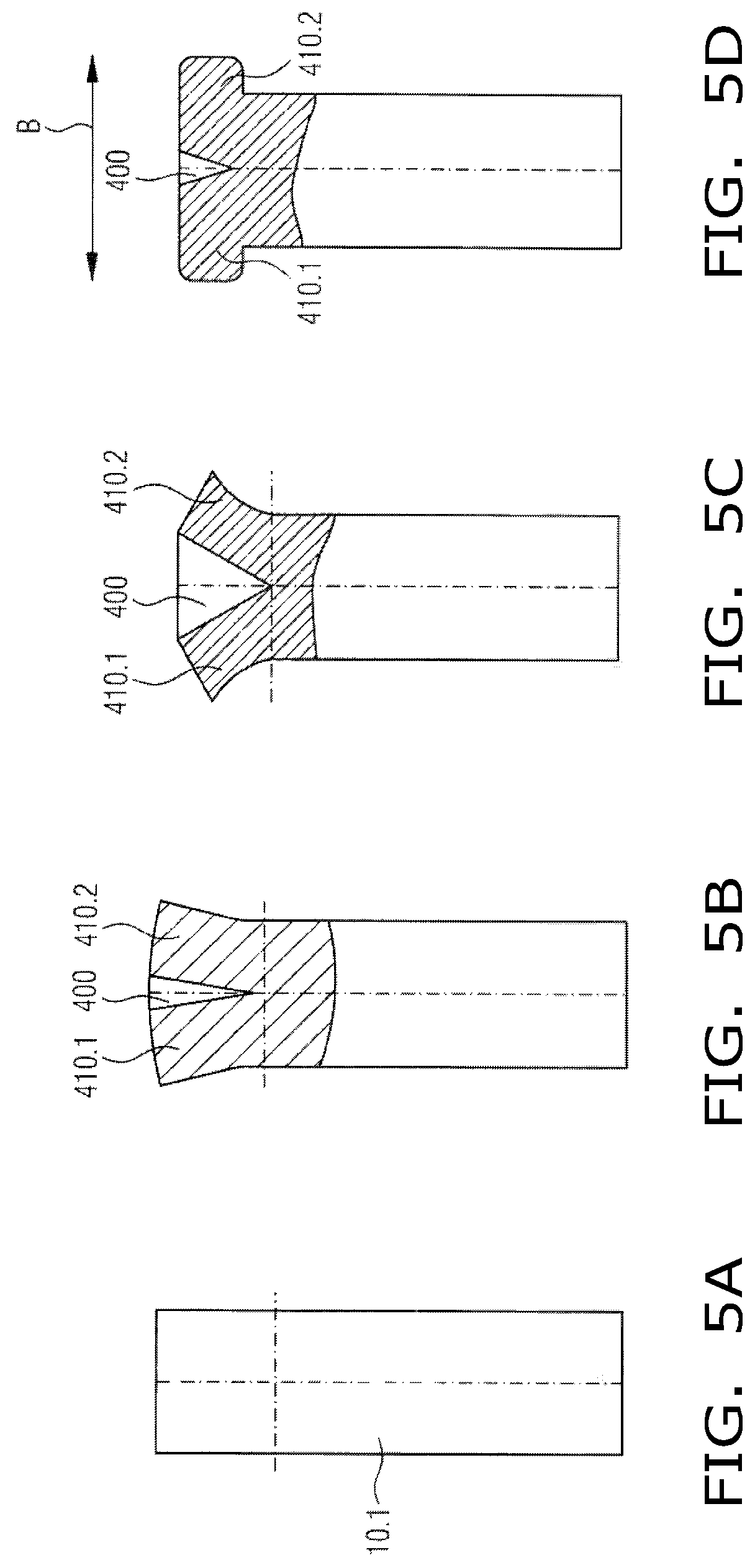Feedthrough with flat conductor
a technology of conductor and feed tube, which is applied in the direction of cell components, hermetically sealed casings, electric apparatus casings/cabinets/drawers, etc., can solve the problems of only insufficient enlargement of available connecting surfaces and no production specifications as to how many openings, etc., to reduce assembly space, minimize component height, and large connecting surfaces
- Summary
- Abstract
- Description
- Claims
- Application Information
AI Technical Summary
Benefits of technology
Problems solved by technology
Method used
Image
Examples
Embodiment Construction
[0057]FIG. 1 shows a top view of an exemplary embodiment of a feedthrough formed according to the present disclosure through a housing part of a housing that may consist of a light metal, such as aluminum or an aluminum alloy, AlSiC, magnesium, a magnesium alloy, titanium, or a titanium alloy.
[0058]The housing part is identified with reference number 1 and, in the illustrated embodiment, includes three openings 3.1, 3.2, 3.3 into which a conductor—which is not shown from above in the top view—is sealed. In the embodiment illustrated in FIG. 1, glazing occurs into a base body, which in turn is inserted into the openings 3.1, 3.2, 3.3 of the housing part 1 and fused with same. Round conductor sections are inserted and glazed into the total of three openings 3.1, 3.2, 3.3 since glazing of round conductors provides a hermetically sealed feedthrough that has a helium leakage rate of less than 10−8 mbarl s−1 at a pressure differential of 1 bar. The conductors having a round cross section ...
PUM
| Property | Measurement | Unit |
|---|---|---|
| length | aaaaa | aaaaa |
| surface area | aaaaa | aaaaa |
| length | aaaaa | aaaaa |
Abstract
Description
Claims
Application Information
 Login to View More
Login to View More - R&D
- Intellectual Property
- Life Sciences
- Materials
- Tech Scout
- Unparalleled Data Quality
- Higher Quality Content
- 60% Fewer Hallucinations
Browse by: Latest US Patents, China's latest patents, Technical Efficacy Thesaurus, Application Domain, Technology Topic, Popular Technical Reports.
© 2025 PatSnap. All rights reserved.Legal|Privacy policy|Modern Slavery Act Transparency Statement|Sitemap|About US| Contact US: help@patsnap.com



